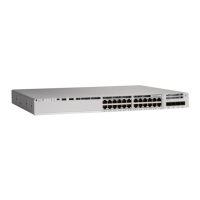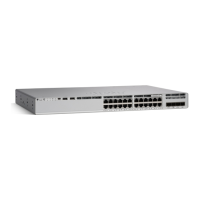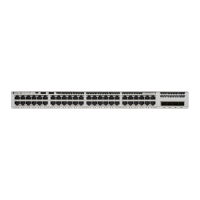StackWise 3.0 m cable4Power supply module1
StackWise 1.0 m and 0.5 m cable5Power cord retainer2
-Fan module3
Ensure that you maintain a proper clearance of 5.5 in. and 4.5 in. between the
StackWise cable and the switch as depicted in the image.
Note
Data Stack Cabling Configurations
This is an example of a recommended configuration that uses the supplied 0.5-meter StackWise cable. In this
example, the switches are stacked in a vertical rack or on a table. This configuration provides redundant
Cisco Catalyst 9200 Series Switches Hardware Installation Guide
20
Installing the Switch
Data Stack Cabling Configurations
